10 Things that will surprise any American visiting Italy
by: Francesa Dabecco
When it comes to Italian stereotypes, there are many things that stand true. Yes, they love their wine, cheese and pasta, they certainly express themselves with their hands, and Italy is definitely full of wild traffic (most of it consisting of smart cars and Vespas). Nonetheless, there are a few things that may surprise Americans the first time they visit The Boot.
- Water is a luxury
You know how you can go to literally just about any place in the U.S., ask them for water, and they just … give it to you? Well, if you’re a person who likes to stay super hydrated, you may have to bring a few extra euros along and your own water bottle Water is not free in Italy – or so it appears.
While the tap water is perfectly fine to drink, most restaurants offer bottled water, especially the popular bottled sparkling water. Because we get free tap water in the U.S., we don’t think to ask for tap water in Italy.
According to the Rick Steves’ article, “Drink like a European,” “to get tap water at a restaurant, you may need to be polite, patient, and inventive and know the correct phrase. Availability of (and willingness to serve) tap water varies from country to country…It’s sometimes considered a special favor, and while your glass or carafe of tap water is normally served politely, occasionally it just isn’t worth the trouble and it’s best to put of with the bottle of Perrier or order a drink form the menu.” A final tip – Many water fountains in big cities have great water where you can fill that water bottle, especially in Rome.
The result? Many euros spent on H20.
- Speaking of water, do you like ice water?
In Italy, do not expect to ever have ice water. With long days touring some of the most famous Italian cities, it is easy to crave a nice sweating glass of cold ice water – at least for Americans.
And it is not just in Italy. According the Rick Steve’s article, “Drink like a European,” ice cubes are solely an American habit – along with cold milk and coffee with meals. “Insisting on any of these in Europe will get you strange looks and a reputation as a crazy American.”
- You have to pay to WHAT?
Naturally, after you suck down one of those water bottles you paid 2 euros for, you will have to make a trip to “il bagno”, but you better hope you’re already in a restaurant. Otherwise, you may have to pay to pee – about the same price it cost for the water to begin with.
This is one thing, according to Rick Steves, that angers many American visiting Europe. “But isn’t it really worth a few coins, considering the cost of water, maintenance, and cleanliness?” he said.
Possibly, but in America, we believe in our right to relieve ourselves for free.
While it is wild for us Americans to pay to use the pot, there are also some bizarre bathroom situations to navigate in Italy.
-
- Bizarre bathrooms
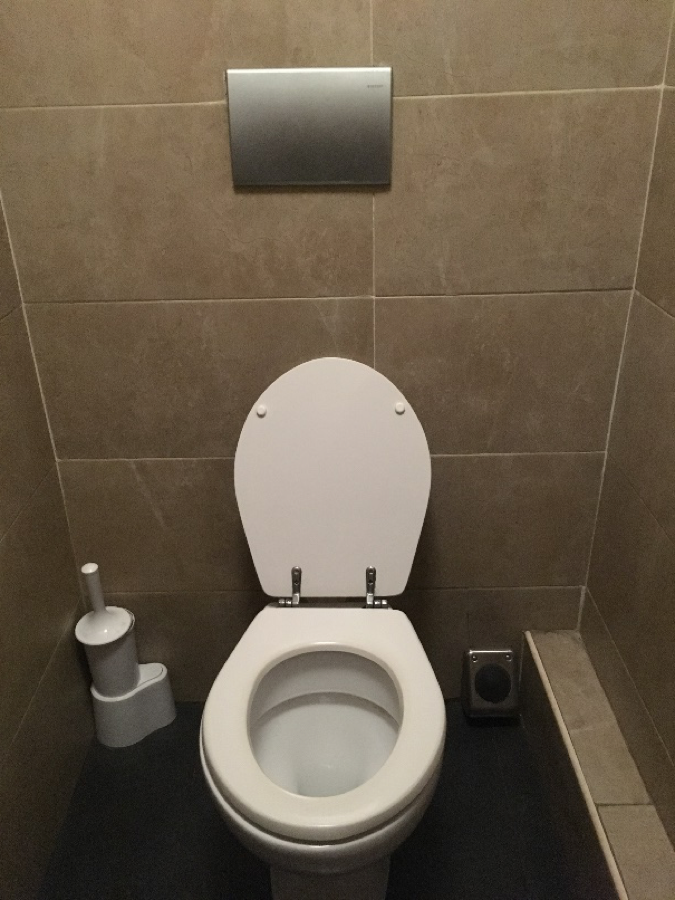
First – the flushing. In America, you can almost guarantee that there will be a handle on the top, right side of the toilet (or left, depending on if you’re standing or sitting). But in Italy, they keep you guessing. Sometimes it is just one button on the wall. In older bathrooms, it may be a string you have to pull that hangs from the ceiling. Each time you visit a restroom, it seems like it is a different flushing system, and you’re left pushing random knobs and nozzles on the wall, looking for the one that does the trick
But before you think you’ve ran out of options – look down. You may have to push a pedal to push down your poo.
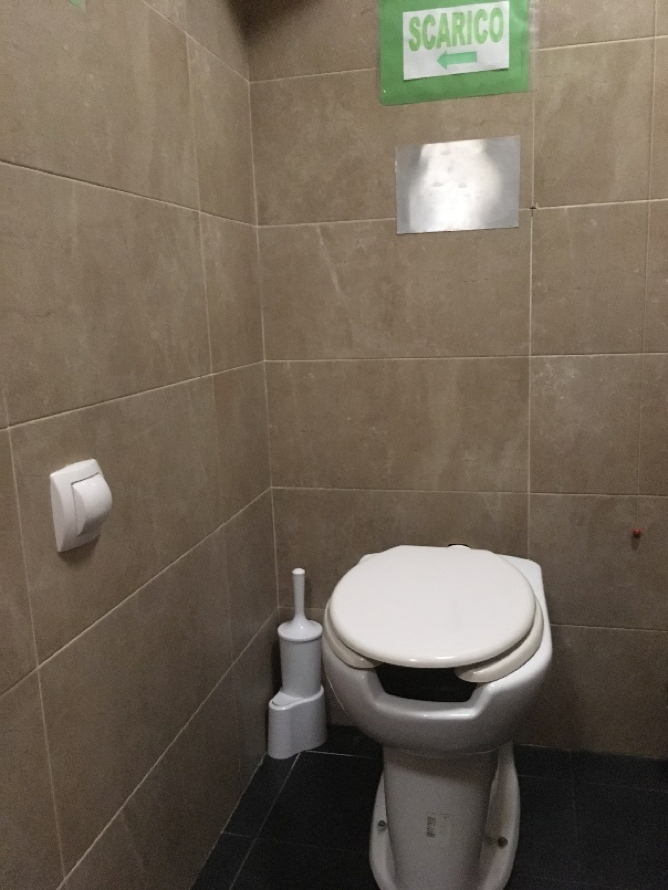
Second – the unknown throne
Again, in the U.S., bathrooms are predictable. The shape and size is pretty much the same everywhere. Here and there, you might get a different color or it might be made out of a different material, but you can guarantee that the toilet will always be at seat-level.
Not in Italy –
According to the article, “European Toilet Tricks to Know Before You Go” by Rick Steves, those of us who actually need to pop a squat on a seat are actually in the minority. “Throughout the world, most humans sit on the haunches and nothing more.”
Happy aiming!
-
- Al dente is the only way
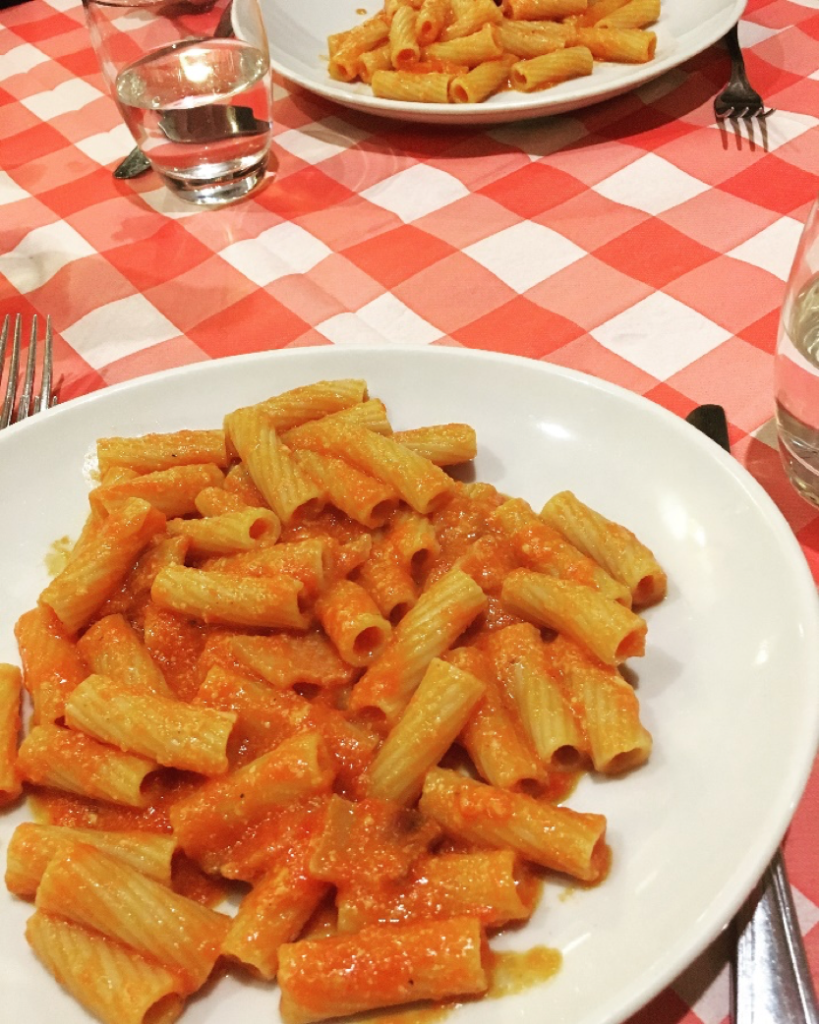
If an Italian took a bite of pasta made in America, they would probably think it was made for someone with no teeth. In Italy, all pasta – whether it is spaghetti, tagliatelle, rigatoni, gnocchi, whatever – is made al dente, which means, “to the tooth” or “to the bite.” It is slightly chewy but still soft, with a great taste to complement any sauce.
As it turns out, the way Italians eat pasta could actually be healthier, too. According to a 2013 Smithsonian Magazine article, “For the healthiest and tastiest way, you want to cook the pasta al dente … If overcooked, the GI index will rise, meaning pasta that is cooked al dente is digested and absorbed slower than overcooked mushy pasta.”
So that’s what we’re doing wrong!
-
- How are you peeling?
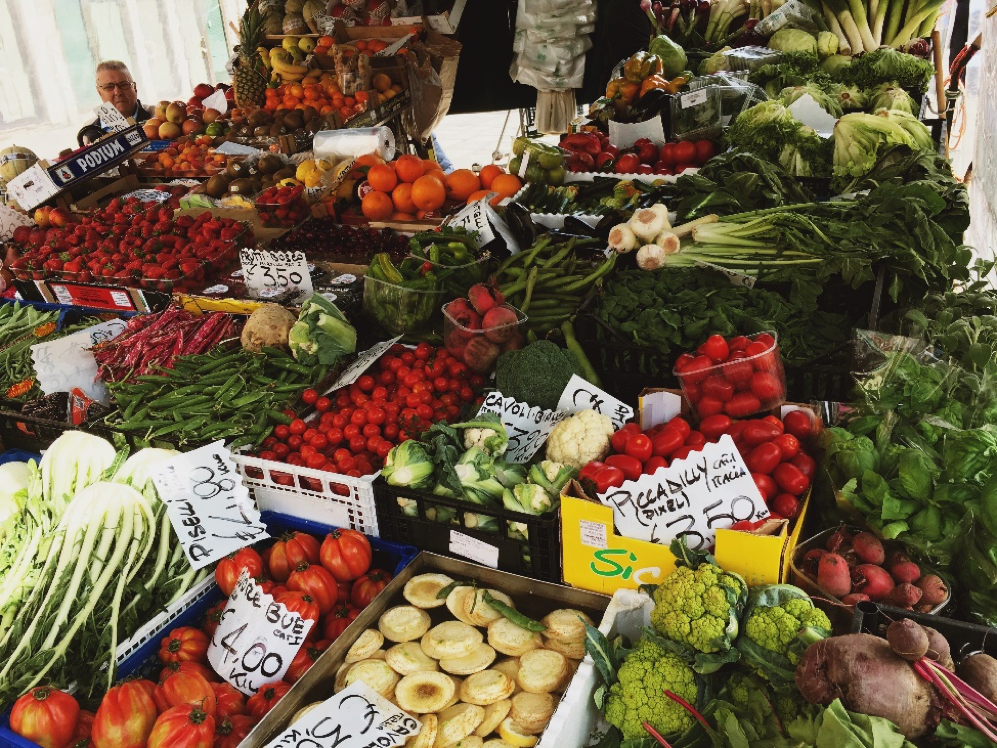
Fruit and vegetable stands are everywhere in Italy, but if you buy an apple or a pear and take a bite out of it right there, you will definitely get weird looks from Italians.
Why? Not because you got a piece stuck in your teeth, but because the fruits that we most commonly eat with the skins – like apples, pears and peaches – are peeled first by the Italians.
According to the Italian Business Tips website, this is due to the heightened sense of health consciousness in Italy. “As most fruit is intensively grown and therefore treated with pesticides, that tends to seep into the peel and linger even after a piece of fruit has been washed,” the article, “4 Italian traditions that the rest of the world can’t understand e.” (Articles cannot talk …) “It is not uncommon for fruit or vegetables in Italian stores and markets to have labels stating clearly that those particular produces have not been treated with pesticides and that they are organic, which meals the peel is edible and can be also used in culinary preparations (such as citrus fruit peel and zest for cakes.)”
But what about the vitamins?
-
- They jam like Americans
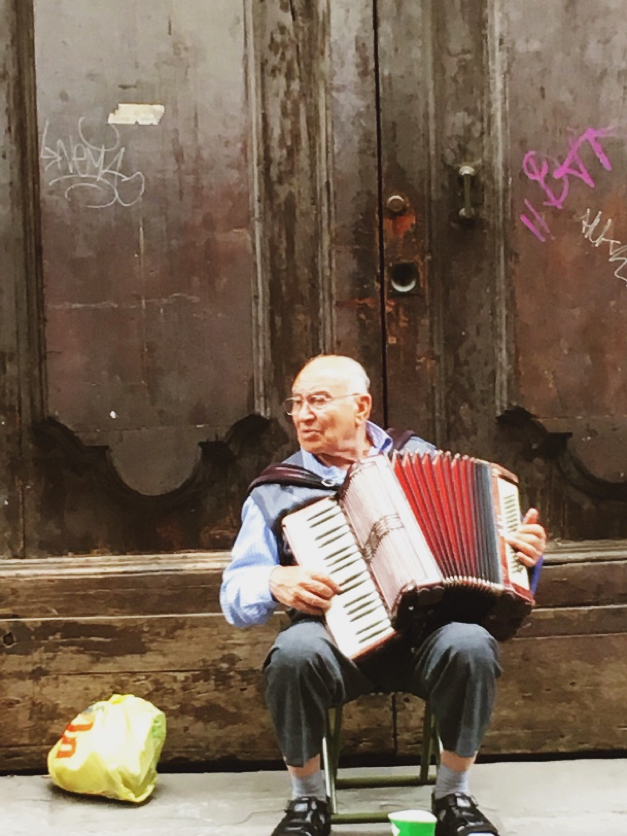
Aside from the cute little Italian men playing accordions on the side of the street, a lot of the music you will hear in Italy, at least in the tourist locations, will be American pop.
When visiting Enel Radio Station, Ed Sheeran’s “Perfect” came on the radio. Despite Ed Sheeran not being from the U.S., he is still a huge star in Italy.
Currently, according to Shazam, Italy’s top 100 consists of American hits like “Next to Me,” by Imagine Dragons, “One Kiss,” by Calvin Harris and Dua Lipa, “The Middle,” by Maren Morris and Zed, “In My Blood,” by Shawn Mendes, “No Tears Left to Cry,” by Ariana Grande, “Say Something,” by Justin Timberlake and Chris Stapleton, and many more.
Buy why are so many American hits popular in a country where English isn’t their first language?
According to the 2017 Cavalier Daily (of the University of Virginia) article, “American pop culture takes strange shapes in Italy,” “The United States is the globe’s pop culture leader. We have the greatest music in the world – diverse, energetic, soulful, constantly evolving. We combine that with a robust, capitalist infrastructure to disseminate our culture and products most effectively.”
-
- Cross at your own risk
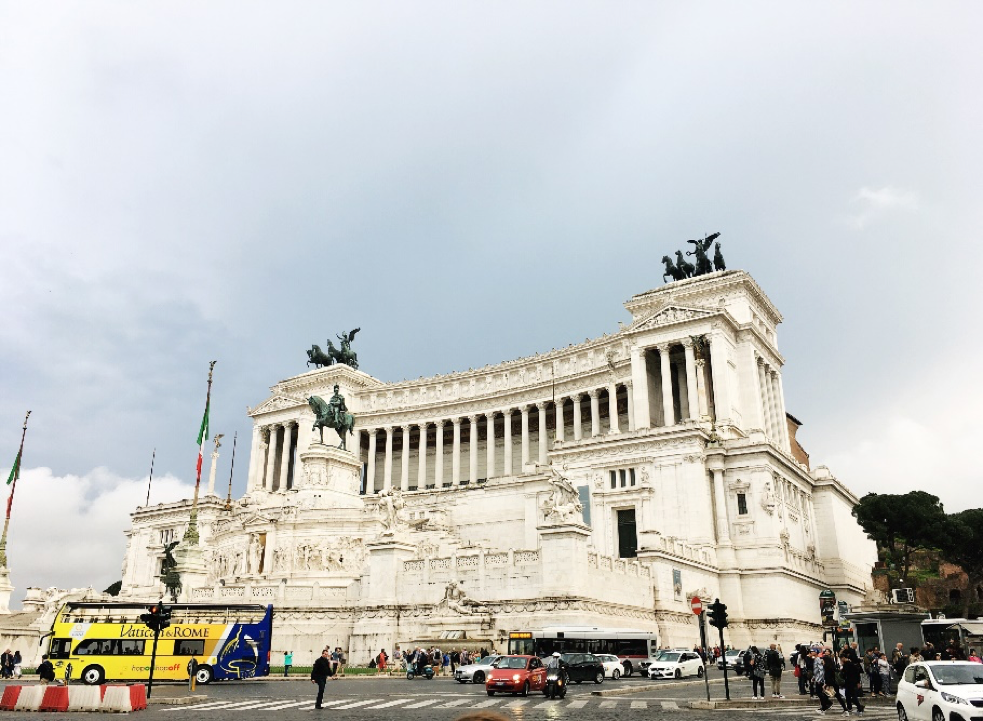
When crossing the streets in Italy, the rules are pretty much the same as the U.S.: green guy means go, red guy means stop, white lines on the road means “cross here.” But in Italy, especially Rome, the game is played totally different.
Cars and Vespas alike will fly through a crosswalk without hesitation to even see if pedestrians would like to cross. It’s as if they want to see how close they can get to you without actually hitting you. And even when you are making your risky move across the road, cars will inch up near you, ready to move as soon as your slow American legs get out of the way.
It’s not just fast traffic – It’s more like a stampede. You’re left battling your confidence on the curb, debating whether to cross or not to cross. And by the time you work up the courage to walk to the other side, oops – the walking man turned red again.
Better luck next time. You will have a new-found appreciate for your right-of-way on a U.S. crosswalk.
-
- Everyone is thin!
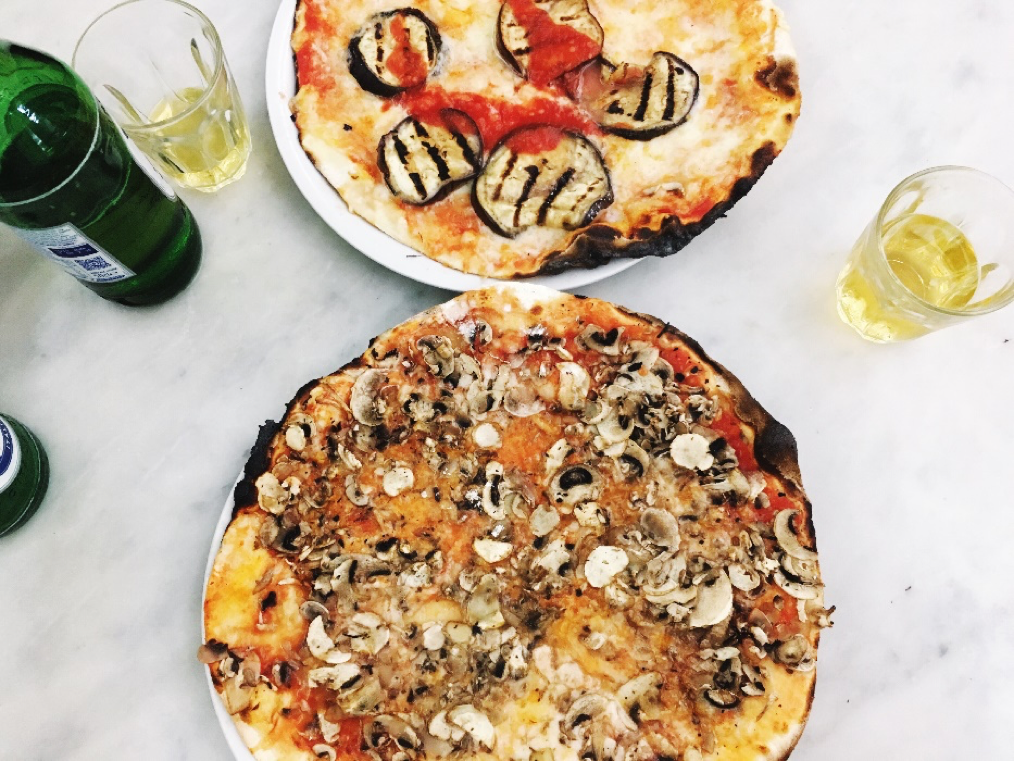
Despite carb and fat heavy food like pasta, pizza, gelato and cheese, Italians still manage to keep their physique.
How? Probably because they walk everywhere.
It makes sense. Our highest recorded distance walked in Italy as a group was over 7 miles in one day. Ah, I actually had 10 several days.
If a 180-pound person can burn close to 100 calories per mile and they walk 7 miles, they burn about 7,000 calories. That’s almost 45 scoops of gelato!
It also has a lot to do with the fact that they enjoy balanced, homemade meals with quality ingredients. Not to mention, they eat leisurely – not in hurry like Americans.
Slow and steady wins the … waist… right?
-
- Start your day with pastries
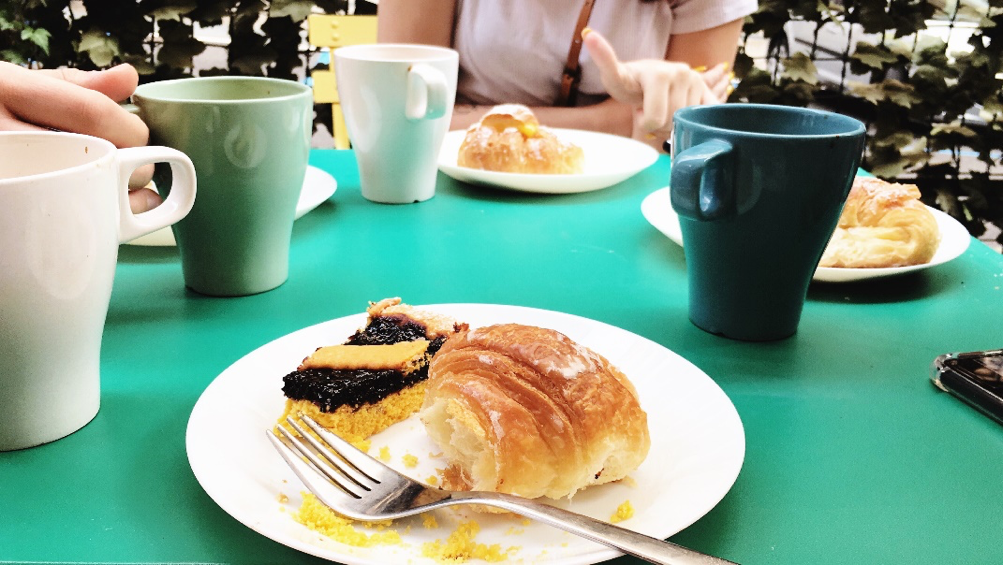
When you think of how healthy Italians are, aside from the fact that they smoke like chimineas, you wouldn’t expect that they eat sweets for breakfast. Yes, I’m talking croissants filled with chocolate or jam, tarts with sugary fruit toppings and Danishes with some type of cheese filling – They eat that stuff up.
According to eater.com, an espresso or cappuccino, paired with a buttery pastry is “a long-standing and widely embraced traditional morning meal … Besides being delightfully simple, the traditional Italian breakfast is also quick: As a Roman barista explains, a cappuccino only takes about 45 seconds to make.”
So the next time you want to eat a decadent pastry first thing in the morning, remember: If the Italians do it, so can you!